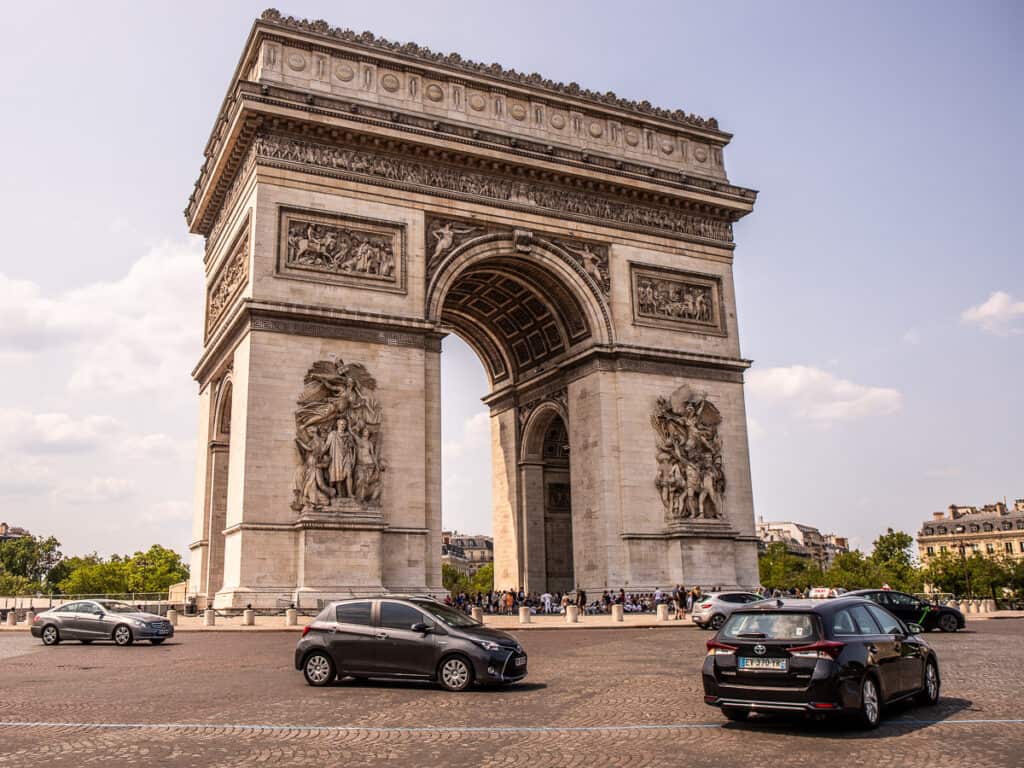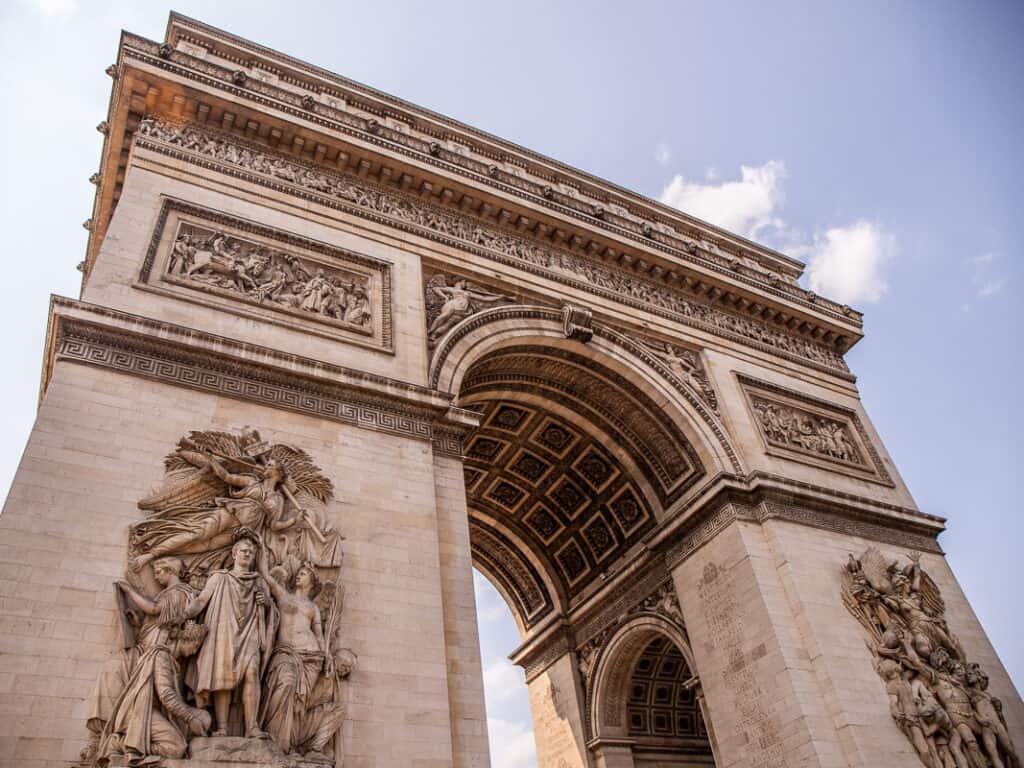This post may contain affiliate links. We may receive a small commission, at no cost to you, if you make a purchase. Read Disclosure.
One of the most iconic landmarks in Paris is the Arc de Triomphe, a monumental structure that is both a symbol of the city’s architectural beauty and fascinating history.
Standing tall at the western end of the Champs-Élysées, this iconic monument allows visitors to not only learn about the country’s military history, but offers panoramic views from the observation deck, which are simply breathtaking.
This was my third visit to Paris and the first time climbing up to the top of the Arc De Triomphe. I’m not even sure I knew you could do that before.
On previous visits, this huge monument was just something pretty to look at as I walked up Champs Elyssee or gawked at the insanity of the cars driving around the Charles De Gaulle roundabout.
One simple climb up the 282 steps on the winding spiral staircase completely changed my perspective of this iconic Paris attraction from a fleeting glance to one of my favorite things to do in Paris.
Even better, our girls (aged 15 and 11) loved it just as much!
If you’re thinking of visiting the Arc de Triomphe but you’re not sure what there is to see, how to visit it, or even know about its history, then you’ve come to the right place.
Keep reading to explore our complete guide to the Arc de Triomphe and unravel why this is such an iconic destination in the City of Light.
About the Arc de Triomphe: A History

The Arc de Triomphe has a rich and fascinating history that dates back to the early 19th century.
It was commissioned by Napoleon Bonaparte (1806) after his victory at Austerlitz.
Construction began in 1806, but due to various delays including wars and financial constraints, it took nearly three decades for the monument to be completed and was finally inaugurated on July 29, 1836.
The Arc de Triomphe is best known for its architecture, which was the vision of French architect Jean Chalgrin. This architectural bias refers directly to ancient arches such as the Arch of Titus in Rome (85 AD), which we later saw in the Roman Forum!
It not only features ornately decorated reliefs featuring scenes of war, but it has the lists of names of French military leaders and battles engraved on its pedestals.

Standing at a height of 50 meters, the arch is a symbol of French patriotism, and serves as a reminder of the country’s military victories and the sacrifices made…
Click Here to Read the Full Original Article at y Travel Blog…
